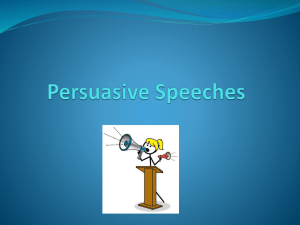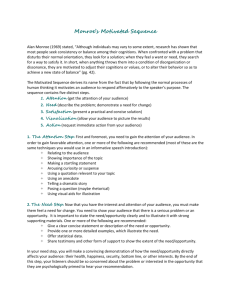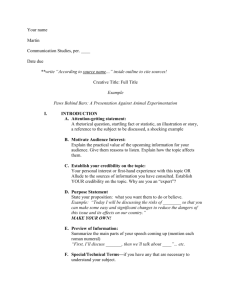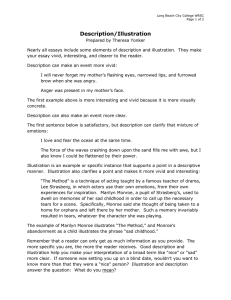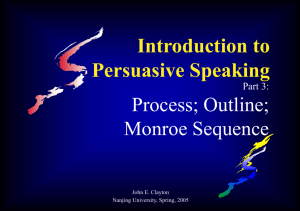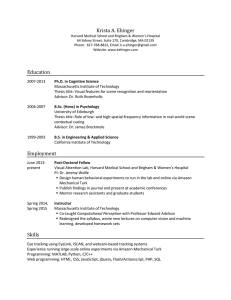Persuasive Presentations Monroe’s Motivated Sequence Pattern
advertisement
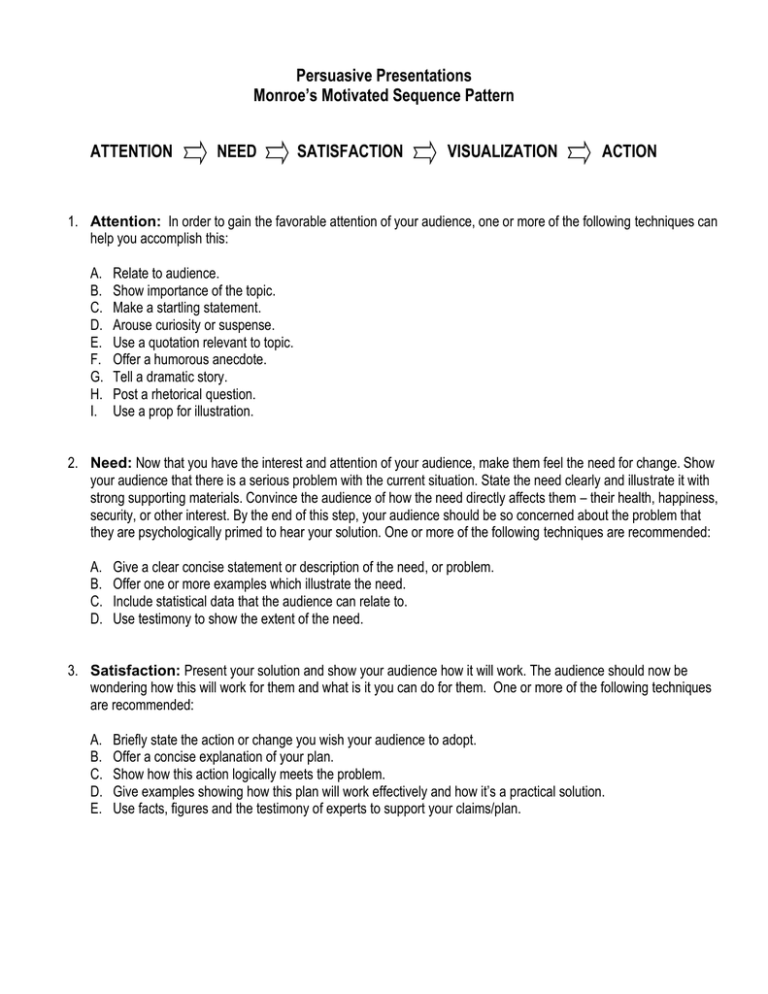
Persuasive Presentations Monroe’s Motivated Sequence Pattern ATTENTION NEED SATISFACTION VISUALIZATION ACTION 1. Attention: In order to gain the favorable attention of your audience, one or more of the following techniques can help you accomplish this: A. B. C. D. E. F. G. H. I. Relate to audience. Show importance of the topic. Make a startling statement. Arouse curiosity or suspense. Use a quotation relevant to topic. Offer a humorous anecdote. Tell a dramatic story. Post a rhetorical question. Use a prop for illustration. 2. Need: Now that you have the interest and attention of your audience, make them feel the need for change. Show your audience that there is a serious problem with the current situation. State the need clearly and illustrate it with strong supporting materials. Convince the audience of how the need directly affects them – their health, happiness, security, or other interest. By the end of this step, your audience should be so concerned about the problem that they are psychologically primed to hear your solution. One or more of the following techniques are recommended: A. B. C. D. Give a clear concise statement or description of the need, or problem. Offer one or more examples which illustrate the need. Include statistical data that the audience can relate to. Use testimony to show the extent of the need. 3. Satisfaction: Present your solution and show your audience how it will work. The audience should now be wondering how this will work for them and what is it you can do for them. One or more of the following techniques are recommended: A. B. C. D. E. Briefly state the action or change you wish your audience to adopt. Offer a concise explanation of your plan. Show how this action logically meets the problem. Give examples showing how this plan will work effectively and how it’s a practical solution. Use facts, figures and the testimony of experts to support your claims/plan. 4. Visualization: Project your audience into the future to picture the potential benefits of your plan. Use vivid imagery to show the audience how they will gain from your plan. These vivid descriptions must be capable of attainment, or they will not be credible. Let your listeners actually imagine they are enjoying the advantages, or suffering the negative consequences, you describe. Use one of the following approaches: A. The Positive Method – Describe conditions as they will be in the future if the solution you propose is carried out. Select a situation for the audience which you are quite sure will arise in the future, and then picture your audience actually enjoying the conditions which acceptance of your plan will produce. B. The Negative Method – Describe the adverse conditions that will prevail in the future if the plan you have presented is not carried out. Picture for your audience the negative consequences which will result from failure to follow your advice. C. The Contract Method – Combine the positive and negative approaches. Use the negative method first and then the positive method. Allow your audience to use their imaginations to contrast the worst and best case scenarios. 5. Action/Conclusion: Make a call for action. This is sometimes called asking for the order. Tell your audience exactly what you want them to do now, and exactly how to do it. Conclude with a stirring appeal to reinforce your audience’s commitment to act now. Beware of making this too long. Don’t overdo it. You are trying to make it easy for your audience to take action right now. Use one or more of the following techniques to help your call to action: A. B. C. D. A challenge or appeal A summary A quotation An illustration Material based on excerpts from: D. Ehinger, A.H. Monroe, and B.E. Gronbeck’s Principles and Types of Speech Communication, pp. 142-163; S.E. Lucas’s The Art of Public Speaking, pp. 353-361; Rosette Salazer’s article, UNC.
